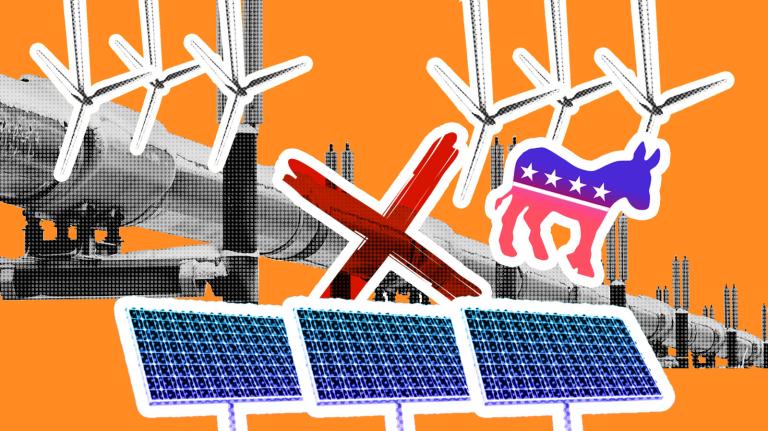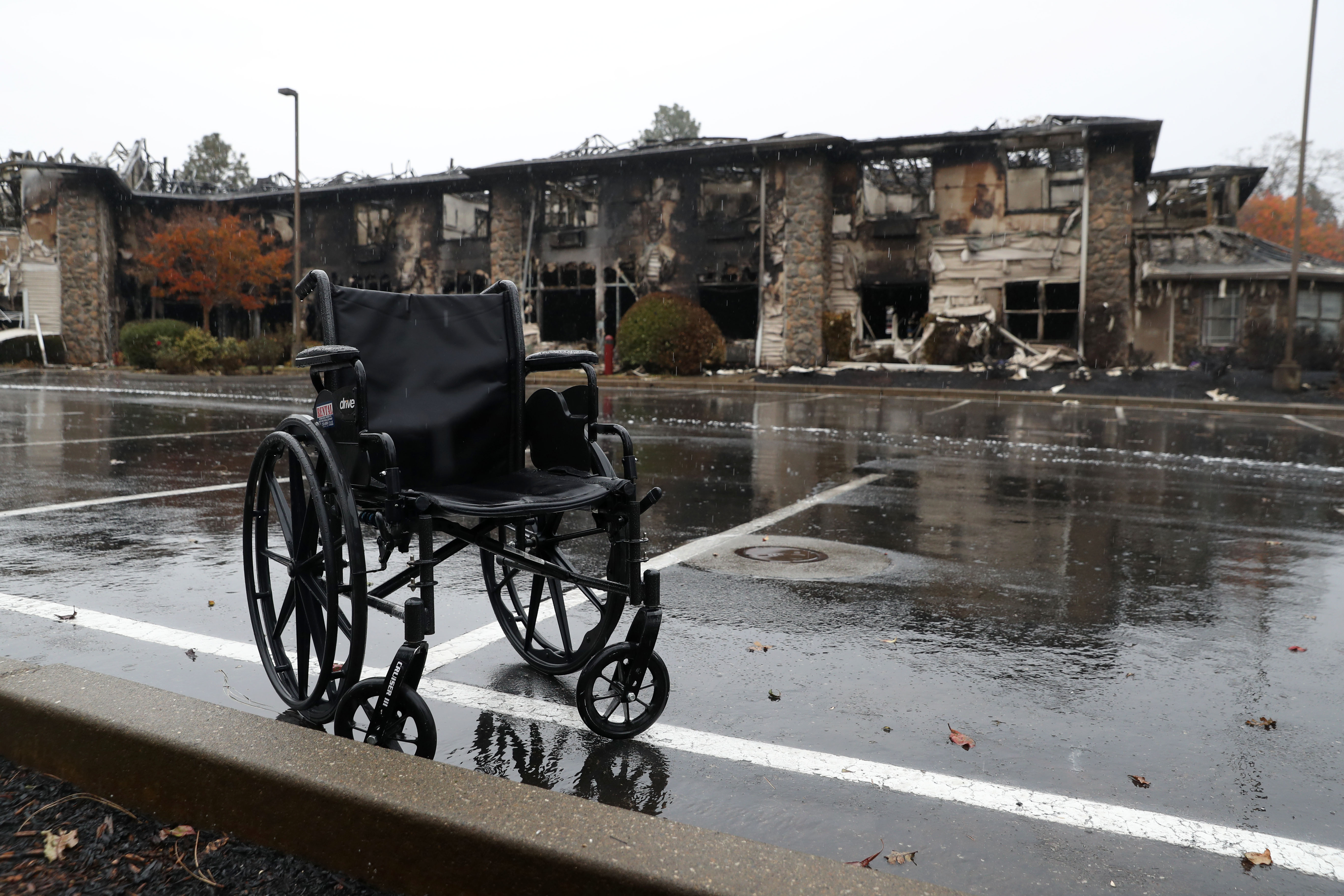This story was originally published by the HuffPost and is reproduced here as part of the Climate Desk collaboration.
Several of the 88 people killed in the Camp Fire that devastated Butte County, California, in November had disabilities.
Their deaths were only the latest example of a tragic reality: When disaster strikes, people with disabilities are disproportionately affected. There are no statistics that show how many disabled people in the U.S. say they could easily evacuate in an emergency, but around the world, just 20 percent of disabled people say they would be able to do so. And only 31 percent said they would have someone to help them in an emergency, according to a 2013 United Nations global survey.
Surviving a disaster is a complicated process for disabled people, with barriers every step of the way. For visually and hearing impaired people, even being alerted to an emergency isn’t as simple as it is for everyone else. For physically disabled and low-mobility individuals, a quick evacuation is extremely difficult, if not impossible — especially in a natural disaster like the Camp Fire, which raged at the rate of destroying the equivalent of one football field per second.
But it doesn’t have to be that way. By inviting disabled people into conversations about disaster preparedness and response, investing in important equipment, and mandating that disaster response teams be knowledgeable on these issues, communities can reduce fatalities and offer a more humane and inclusive response to disasters.
Relying on luck
The Americans With Disabilities Act devotes chapters to emergency planning and recovery. However, states institute their own policies and codes for evacuation and emergency planning, and those policies aren’t always enforced, said Hector M. Ramirez, a Ventura County, California-based disabled man and board member of Disability Rights California.
Evacuation plans can be outdated, he said. And community members often aren’t aware of what those plans are even if they do exist. In fact, only 17 percent of disabled people were aware of their community’s emergency evacuation plan, according to the U.N. survey.
Some federal institutions, like the Federal Emergency Management Agency and the Centers for Disease Control and Prevention, have created online resources about emergency preparedness and response. But disabled people are both frequently left out of developing emergency preparation plans and not made aware of the ones that are put in place, Ramirez said.
Plus, on-the-ground disaster response is often facilitated by well-meaning volunteers who might not be well-versed in the specific needs of the disabled community.
Federal, state, county, and nonprofit institutions all provide emergency response, and Ramirez said they all “need to familiarize themselves with our issues.”
And for many disabled people, getting out of their homes is only the beginning. Shelters often lack necessary equipment and medications for disabled people who do evacuate, like hearing aids, walkers, wheelchairs, or ventilators, Ramirez said. The prospect of rebuilding a home that had been built around an individual disability can also be daunting and expensive — particularly considering disabled workers typically earn significantly less than their able-bodied counterparts.
Mobility is the top issue in preparing disabled people for a disaster, said Evan LeVang, director of Butte County’s Disability Action Center. He recalled a horrifying phone call during the Camp Fire, during which a quadriplegic man was stuck in his second-floor apartment with a broken elevator. The caller said his goodbyes because he thought he was going to die.
“You could hear the propane tanks going off in the background,” LeVang said. “It was emotional.”
LeVang’s team managed to contact a first responder on the ground in the town of Paradise, and the man was saved — but there had been no system in place to make that rescue happen, other than the luck of getting through to that first responder.
There were plenty of “heroic acts” in Paradise during the fire, but LeVang said the disabled community shouldn’t have to solely rely on individual acts of heroism to survive.
For now, though, he said, the unfortunate reality is that disabled people may be left to do their own emergency planning.
‘Disabled people need to be part of the planning’
Some communities have taken steps to support disabled people, but there’s still a tremendous need for wider inclusion.
In 2007, the city of Oakland implemented a Functional Needs Annex to its Mass Care and Shelter plan, ensuring that disabled community members weren’t left out in an emergency. The annex is updated every few years to stay relevant to the community, and initial reports show the program helped identify more accessible shelters and more accessible alert notification systems. Kentucky has updated its disaster alerts systems by incorporating community training and committing to notifying disabled people in-person at the onset of a disaster. Arizona’s state health department purchased equipment to meet the needs of 1,000 disabled people in an emergency.
These are small and important steps, but “planning for this level of natural disasters hasn’t really begun,” Ramirez said. And until it does, the disabled community will continue to suffer — especially, Ramirez said, as climate change makes these incidents more frequent and more severe.
“I think it’s really important for us to ask [ourselves]: Can we really afford to not be doing this, knowing what we know now?” Ramirez asked.
Systemic change certainly needs to happen, but advocates like Ramirez and LeVang also want to encourage able-bodied people to show up for their disabled friends, family, neighbors, and loved ones whenever there’s an emergency.
“Always ask people if they need help,” he said, noting that not every disability is apparent. “Recognize that that’s going to be a transitional phase. There’s going to be need for support on the long term, a continuum of care.”
Ultimately, inclusion — on both a systemic and individual level — matters most.
“I really think it’s important that people with disabilities be at the table making some of the decisions that impact our lives,” Ramirez said, “because when it doesn’t happen … a lot of the work falls short.”




